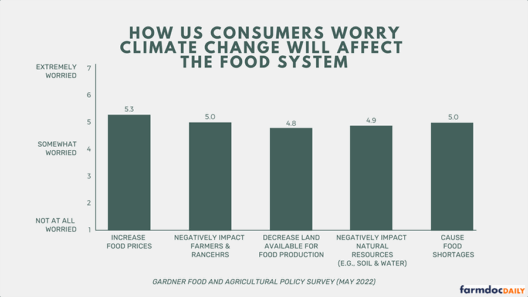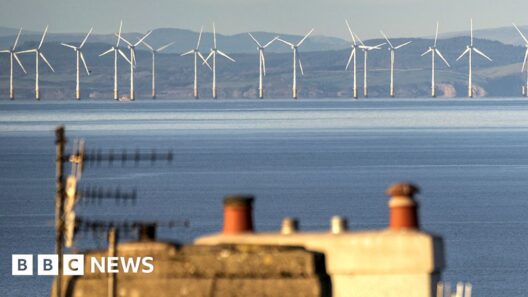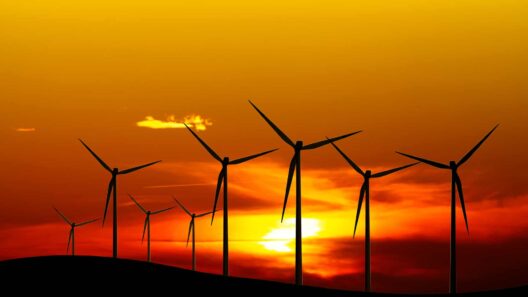In today’s rapidly evolving environmental landscape, the paradigm of energy conservation has taken on myriad dimensions. One often-overlooked facet is the interrelationship between water conservation and energy savings. This exploration delves into not only the measurable impact of conserving water but also illuminates the straightforward techniques that facilitate this synergy. By examining how energy conservation can be derived from saving water, a richer understanding emerges—one that prompts a profound shift in perspective regarding our daily choices.
The Water-Energy Nexus
Water and energy are intrinsically intertwined. It requires energy to process, transport, treat, and heat water. Conversely, conserving water leads to reduced energy expenditures. According to estimates, approximately 20% of the electricity consumed in the United States is utilized for water supply and wastewater treatment systems. This statistic underscores the imperative need to view water conservation as a vital aspect of energy efficiency.
The first step in measuring energy conservation through water savings revolves around grasping the energy footprint of water usage. Water heating, for example, is one of the largest consumers of energy in most households, accounting for approximately 18% of the energy costs in a typical home. Electric water heaters demand significant electrical energy and a 10% reduction in hot water usage can translate into a measurable decrease in energy consumption.
Techniques for Water Conservation
Employing effective techniques for water conservation can yield substantial energy savings. One method is implementing low-flow fixtures, both in faucets and showerheads. These devices work by aerating the water and reducing flow rates without sacrificing performance. While the immediate results may appear modest, cumulative savings can be staggering over time. For instance, transitioning to a low-flow showerhead can save several gallons of water per minute, thereby reducing the energy necessary for heating that water.
Installation of dual-flush toilets offers another remarkable avenue of conservation. Such toilets provide the option to utilize different amounts of water for liquid and solid waste. By choosing the appropriate flush, households can realize significant savings both fiscally and in terms of energy consumption. The energy saved by not having to treat and pump excess wastewater directly correlates to fewer greenhouse gas emissions entering the atmosphere.
Another essential technique involves rainwater harvesting systems. The adaptation of rainwater collection not only conserves potable water but also lessens the energy required for municipal water treatment facilities. By capturing and utilizing rainwater for irrigation or non-potable uses, households and businesses stand to significantly lessen the demand on conventional water sources, and correspondingly, the energy necessary for its management.
Measuring the Impact
The process of quantifying the energy conservation achieved through water-saving measures may involve a series of analytical steps. Monitoring utility bills, before and after implementing water-saving fixtures, provides an initial gauge of the economic impact. By establishing a baseline of water consumption, families can extrapolate their energy savings and gradually unveil the connection between reduced water use and energy expenditures.
Additionally, employing energy modeling software can better quantify these savings over time. Such tools can integrate household water usage patterns with energy consumption data, delineating how reductions in water usage yield lower energy requirements. This kind of analytical approach not only fosters informed decisions but also cultivates a richer understanding of the sustainable interplay between water and energy.
Behavioral Shifts and Community Engagement
While technology and equipment advancements are fundamental, behavior remains a significant component of conservation. Promoting awareness and education regarding the benefits of water conservation creates ripple effects within communities. Simple adjustments in daily practices—taking shorter showers, turning off taps while brushing teeth, and fixing leaks promptly—can accumulate to notable impacts. Community initiatives centered on water conservation can engender a collective responsibility, ultimately resulting in widespread energy savings.
The concept of “water footprints” has gained traction in recent years, with many individuals now exploring how their water consumption correlates to energy use. Understanding and visualizing the energy costs associated with excessive water usage fosters a spirit of conscientiousness among consumers. As citizens become attuned to the concept of sustainability, energy conservation behaviors are more likely to emerge organically.
The Broader Environmental Context
The implications of marrying water conservation with energy savings extend beyond the household level. Collectively, if communities succeed in implementing effective water-saving techniques, the cumulative reduction in energy usage can significantly impact regional energy demands. Such a transformation not only diminishes electricity bills but also contributes to mitigating the environmental outcomes of over-extraction and depletion of water resources.
Furthermore, the ripple effects impress upon local economies, resulting in lower operational costs for municipal utilities and potentially lessening the need for new infrastructure development. As energy conservation from water savings mounts, a corresponding decrease in greenhouse gas emissions emerges, thus facilitating a pathway to a more sustainable future.
Conclusion
In summation, the relationship between water conservation and energy efficiency is a crucial element in the fight against climate change. By adopting simple and effective techniques for reducing water usage, individuals can measurably contribute to energy conservation. This dual approach not only supports sustainable living but also engenders a broader understanding of our interconnected environmental systems. Through the power of informed choices and community engagement, we can reframe our actions and cultivate a stewardship mindset—ensuring a legacy of sustainability for generations to come.







